Almost every user of a gas tank or gas cylinder is familiar with the situation when the gas freezes in the tank itself in winter or the reducer stops working due to low temperatures. You have to quickly fix the problem, especially if such a source of fuel is the only one in your home. But, you must admit that it would be much wiser to understand the reasons for this phenomenon and eliminate the freezing of the gas tank than to try to deal with the consequences every winter.
When the gas tank or its reducer is frozen, letting everything go by itself is not the best solution. In severe frosts, there is a high probability of being without heating. If you follow our advice below, you can choose the optimal gearbox, properly insulate the entire system and make it more reliable.
But before that, it is worth understanding the very problem of freezing of gas tanks, namely, for what reason this happens and how to prevent this process. We investigated this problem and found several reasons for what is happening, as well as ways to eliminate them.
The content of the article:
- Causes of gas freezing in gas tanks
- The principle of the gearbox
-
How to avoid freezing of the gearbox?
- Regular maintenance of the device
- A way to quickly warm up the gearbox
- Gearbox heating set
- What to do if the gas tank itself is frozen?
- Gas tank insulation options
- Conclusions and useful video on the topic
Causes of gas freezing in gas tanks
Many users of this device will not be surprised by the situation when the gas froze in the gasholder. Everything is related to the properties of liquefied petroleum gases (hereinafter LPG). As soon as they are pumped into the gasholder, they change their state of aggregation under high pressure and partly turn into a liquid, and partly remain in a gaseous form.
LPG is composed of a mixture of hydrocarbon gases, usually propane and butane, which have different physical characteristics. So, in the warm season, in the area of the gasholder neck, there is more butane, the active evaporation of which occurs at a temperature of more than -0.5 ° C. In winter, on the contrary, butane becomes more liquid and is at the bottom of the container.
Read about how winter gas differs from summer gas in this material.
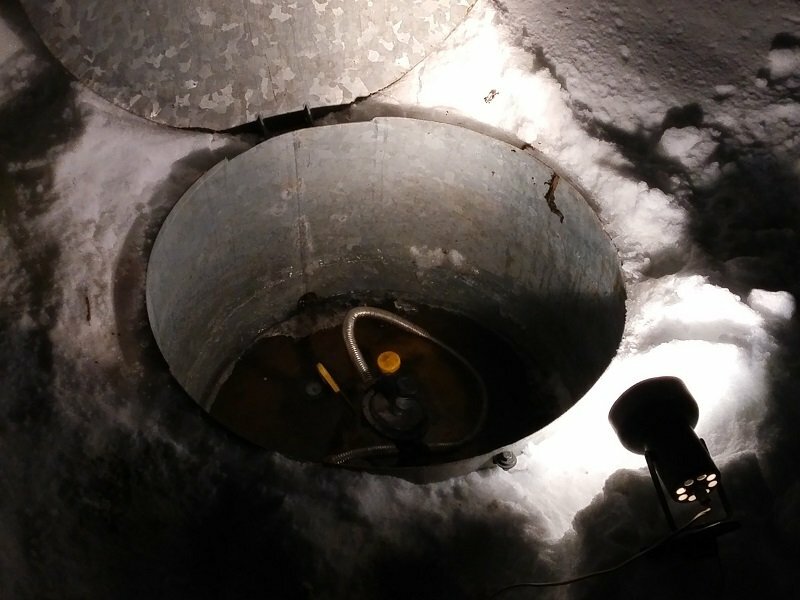
In the cold season, it is unlikely that it will be possible to avoid a drop in the temperature inside the container, and this, with a poor composition of the mixture, can lead to its freezing.
Based on this, several conclusions can be drawn:
- The gas mixture for use in summer and winter must be different. The optimal ratio for winter time is at least 80% propane and 20% butane.
- To prevent the gas tank from freezing, it is recommended to install it underground, at a depth of at least 1 meter from the surface.
- It is necessary to observe rules for installing gas tanks.
If you follow these simple rules, the likelihood of freezing a container with gas will significantly decrease.
The principle of the gearbox
To supply gas to private houses, gas tanks are often used inside which there is a rather high pressure, but it is not suitable for supplying gas to the house. Therefore, to reduce it, it is used reducer. It has a special design that reduces the LPG head to controlled values.
The reducer works as follows: a special valve, which is connected to a flexible membrane, periodically opens and closes. Due to the difference in pressure between the lower and upper chambers, the membrane activates and passes the gas at the desired speed.
Residents of country houses often face a problem when the gas tank reducer freezes, and this happens quite often, especially in winter. How efficient will the system be in this case and how can it be repaired?
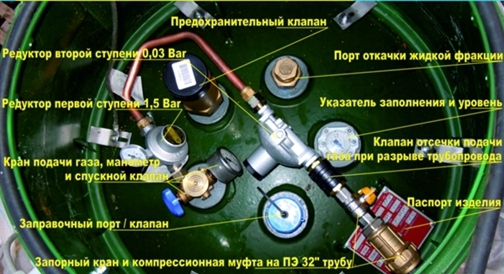
The problem is that the gearbox is installed openly, so it is often flooded with water, covered with snow, mud, which, when frost sets in, causes the device to freeze
It is important to install a protective cover over the gearbox or sheath it with moisture resistant materials to prevent moisture build-up and to avoid freezing problems.
How to avoid freezing of the gearbox?
There are several ways to avoid freezing. For example, you can build a special shelter over this element of the gas tank to protect the device from moisture ingress into it.
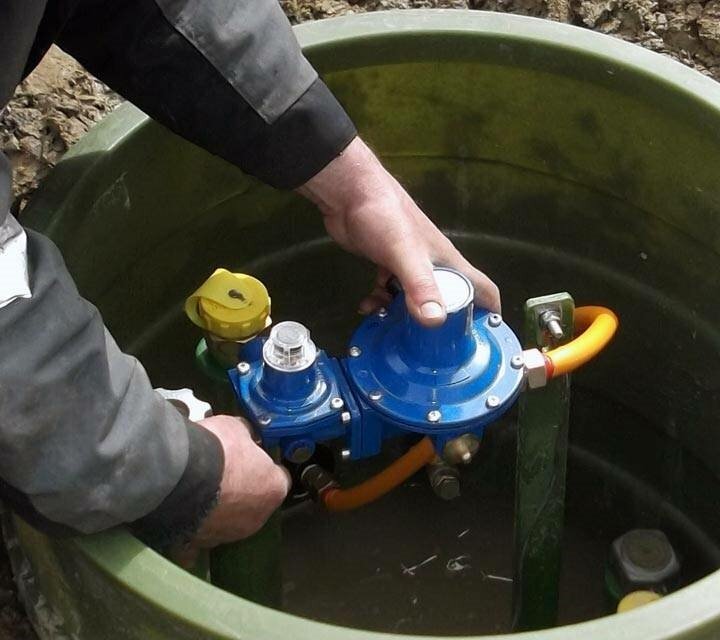
In order for the gas reducer to serve for a long time and without breakdowns, constantly inspect it for damage before the start of the heating season.
The second way to avoid the problem of freezing the gearbox is to choose a high-quality device. Most freeze in winter even without moisture getting inside. They have to be insulated or warmed up.
If you buy a good gas supply regulator, it will be able to work stably and give the required outlet pressure even in the most severe frosts. For example, Rego and Gok devices are the sales leaders among gas tank reducers. Choose gearboxes with high nozzles to reduce the chance of freezing.
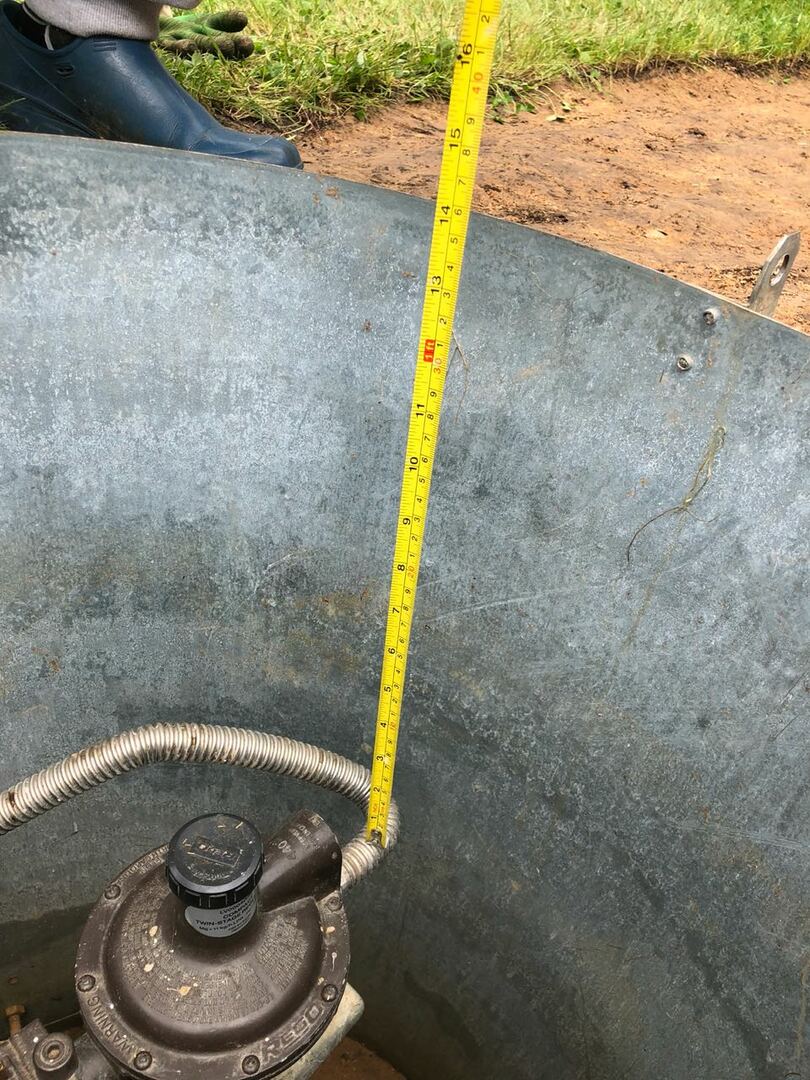
Install gearboxes with higher nozzles so that they are not deep in the ground - this will prevent the gas tank from freezing
The most optimal option is the purchase of expensive equipment and the construction of a special electrically heated shelter for it. This solution will maximize the life of the gas tank with a reducer and avoid problems with its use.
Other options for avoiding gear freezing:
- install a gas tank with a high neck;
- purchase a device with a multivalve and high nozzles. Here it is also important to install it correctly so that the nozzles are not deeply planted in the ground;
- purchase a waterproof gearbox in which the breathing valves have high nozzles;
- use only high quality fuel.
If you see problems in the operation of your gearbox, it is better to disassemble it and fix all the problems before freezing, since then it will be much more difficult to warm it up.
Regular maintenance of the device
Often, moisture in the reducer appears during the endothermic process of gas evaporation (heat is absorbed in the gas holder and reducer, they become very cold, and condensation appears on their surface), it can accumulate even during the construction of all kinds shelters.
Therefore, it is important to periodically carry out preventive maintenance of the device - to remove it from the gas holder and clean and dry. You can do this yourself, or you can invite a master who will disassemble, clean from dirt and dust, replace a worn out membrane or spring, and, if necessary, adjust the pressure.
A way to quickly warm up the gearbox
If an emergency has already occurred and the gearbox is frozen, you can pour boiling water over it. It is strictly forbidden to heat the device with an open flame or devices with a spiral, such as a hair dryer. This can lead to ignition of the gas mixture.
Simple heating cable and other electrical appliances are also not recommended, because in the event of a short circuit, a spark may occur, which can cause a subsequent explosion of gas in the gas holder.
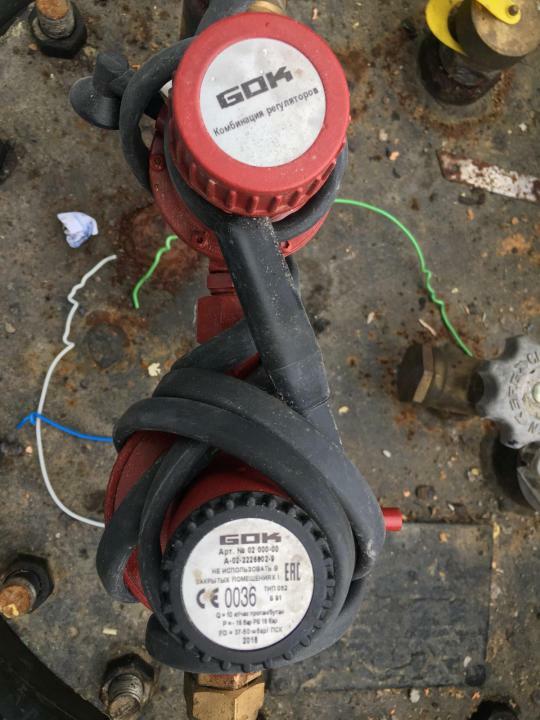
To heat the gas tank reducer, it is allowed to use a safe heating cable, which excludes the appearance of a spark and ignition
It is possible to determine if the reducer is frozen if the outlet gas pressure is too unstable. It can be absent, sharply increase or decrease with stable operation of the boiler. If you observe at least one of these problems, it is worth contacting the master.
Gearbox heating set
The method of using boiling water to warm up the gearbox usually does not help for long, so if you have have professional skills that allow you to repair the gearbox yourself, we recommend buy:
- safe heating electric cable;
- insulating shell for placing the gearbox in it;
- fork 2 meters from the gas holder.
This kit can be installed independently if you have experience with gas equipment, but if you do not have such experience, you should contact a specialist. After all, any careless movement can “finish off” the membrane of the reducer already damaged by ice.
What to do if the gas tank itself is frozen?
Although the main reason for the lack of gas supply from the gas tank is the freezing of the reducer, sometimes the tank itself can freeze. So, the water on the site can be in such an amount that it is capable of flooding the gas tank and freezing it with the arrival of frost. And there is a situation when there is still gas in the tank, but it does not come out.
The second reason for the freezing of the gas tank is the consumption of propane from LPG and the remainder inside only butane and water condensate, which freeze with ease.
It is important to insulate the gas tank, because in severe frosts, any LPG will freeze. For example, pure propane in a liquefied state is capable of freezing even at -15 ° C. It leads to the fall pressure in gas pipes, malfunction of the boiler and other problems.
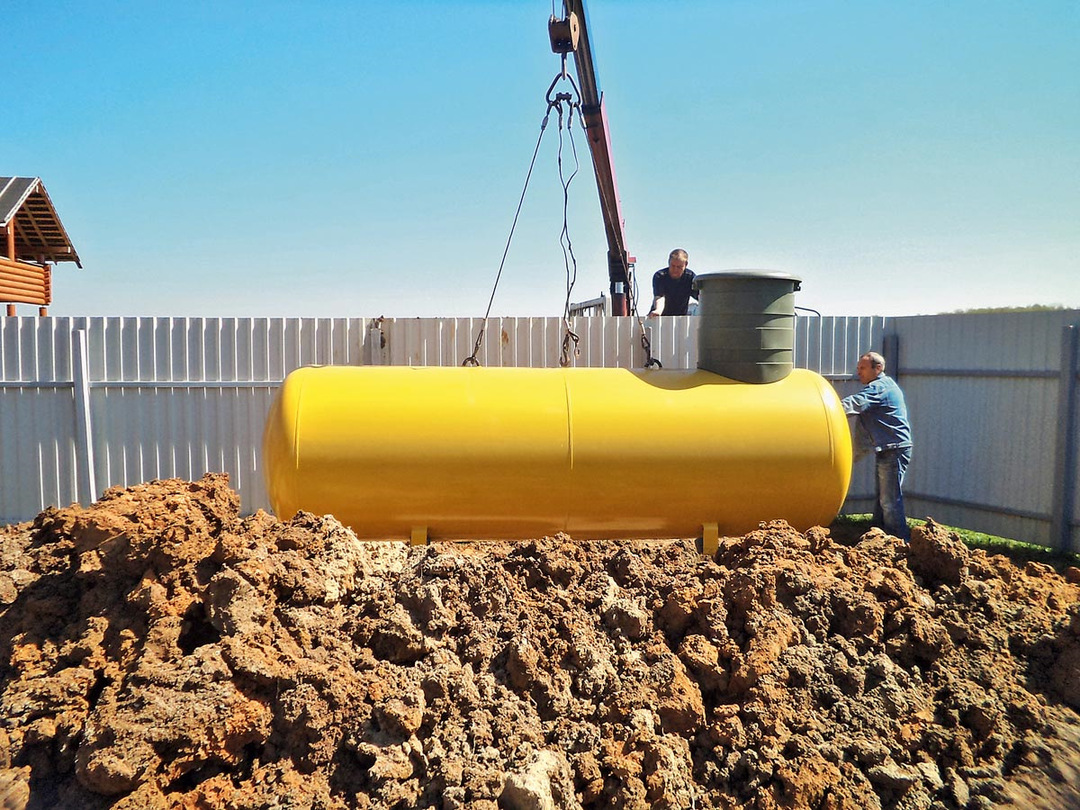
Install the gas tank as deep as possible underground, at least 1-1.5 meters deep, to avoid freezing in severe frosts
In such cases, users have only one question: to what extent is it permissible to use heating to restore the operation of the gas tank? The easiest way is to pour boiling water over the reducer and part of the container near it. This will allow the neck itself to warm up, where the gaseous product should form. But it is much more important to correctly install the gas tank and connect reliable equipment to it.
So, if the container is installed too close to the surface of the earth or even stands on it, then the balance of propane and butane in the mixture will quickly deteriorate. The propane will evaporate even at the lowest temperature, leaving butane in the container. This gas is much more prone to freezing and often creates a slug in the pipe, leading to a drop in pressure. The optimal ratio of propane and butane should be at least 75:25, and preferably 80:20.
Gas tank insulation options
Owners of houses that are heated exclusively with the help of autonomous gas supply often think about additional insulation. This is especially true for residents of the northern regions, where the operation of the gas tank is complicated by very severe frosts. But how effective can the insulation be with a standard insulation, for example, foam, for the operation of a gas tank?
As mentioned, butane freezes naturally at extremely low temperatures. In view of this, in the northern part of the country, people do not rely on the quality of the winter gas mixture, where there is more propane, but they prefer to insulate the container with heat-insulating materials, for example, extrusion expanded polystyrene.
In the same regions where severe frosts do not happen, it is enough that the gas tank is installed at a depth, and from above it is protected by a layer of snow, which does not allow cold air to pass below.
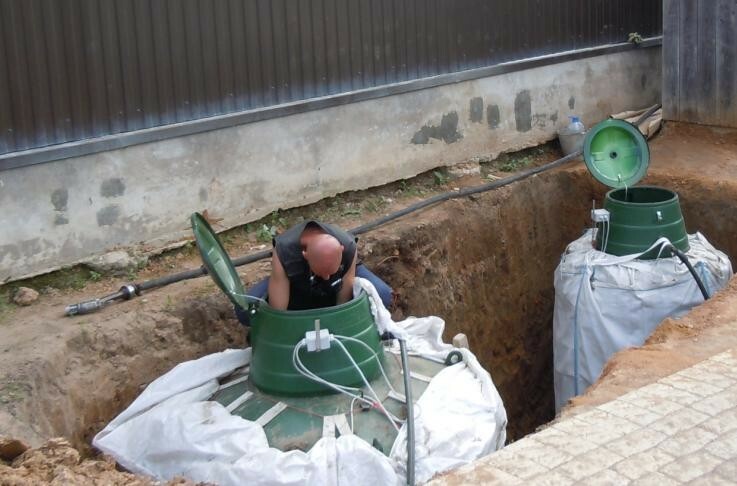
In warm areas, where the ground does not freeze deeply, it is enough to insulate the gas tank around the perimeter with a thin layer of heat-insulating material
It is best to use polystyrene as insulation, both sheets and crumb, mineral wool, penofol, expanded polystyrene. Their number should depend on both the lowest air temperature in the region and the depth of the gas tank.
If it was decided to insulate the gas tank, use the following expert advice:
- install insulation on the top of the container;
- carefully sheathe the neck and lid with heat-insulating material;
- make a quality gear cover.
Some people try to bring a pipe from a warm floor to the gearbox and maintain a temperature in it of about 30 degrees.
But not all engineers approve of such a solution, so consult with specialists before implementing it. But never lead the electric cable to the gas container.
Conclusions and useful video on the topic
Below, in several videos, you can get detailed information about the causes of freezing of the gas tank reducer and how to defrost it, as well as how to choose the right gas tank itself.
Principles of the correct choice of a gas tank and its installation on the site:
The main causes of freezing of the gas tank reducer and ways to eliminate them:
So, freezing of the gas tank reducer and even the tank itself is a frequent occurrence in winter. The choice of an unsuccessful gas mixture, the use of cheap equipment, the lack of timely preventive maintenance for the gearbox - all this leads to emergency situations.
To eliminate the problem, it is recommended to contact the specialists who will carefully defrost the gas tank and resume its operation. In the future, it is worth thinking about insulating the entire system so that such situations do not recur.
If you are faced with the problem of freezing a gas tank or its reducer in your area or have professional knowledge in this area, leave your comments, ask questions, share your own experience.


